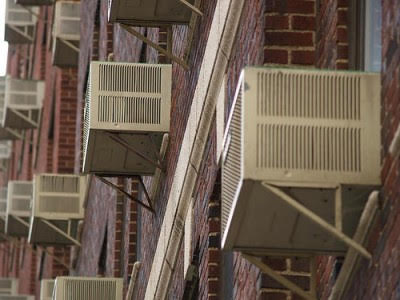On August 8, the United States Court of Appeals ruled against restrictions to products that contain hydrofluorocarbons (HFCs). HFCs are a harmful greenhouse gas that trap heat in the atmosphere. According to Inside Climate News, the ruling was in favor of two foreign HFC manufacturers (Mexichem Fluor and Arkema), holding that the “EPA had no authority to regulate the gases under the Clean Air Act.” This was bad news for Honeywell International and Chemours, companies that have been manufacturing less harmful coolant chemicals called hydrofluoroolefins.
The court ruling “shows that at least some judges think the Environmental Protection Agency needs more specific authority from Congress to act on HFCs.” The legal loophole in a nutshell: the EPA has authority to regulate ozone-depleting gases, but not other harmful substances. HFCs were the alternative to the older chemicals that were harmful to the ozone layer. And though HFCs don’t deplete the ozone, they are still considered greenhouse gases that are incredibly impactful on climate change. “Congress has not yet enacted general climate change legislation,” Judge Brett Kavanaugh wrote. In response, “Judge Robert Wilkins, an Obama appointee, dissented, saying that the EPA was due deference for what he said was a reasonable interpretation of the statute.”
Chemical and Engineering News states that “the EPA rule would have banned the use of HFC-134a as an air conditioner refrigerant in most cars and trucks sold in the U.S. starting with model-year 2021.” All avenues for appeals to this ruling are being explored.
The original Obama-era ruling was an important piece of the puzzle to meeting the Paris Climate Accord goals, and would have significantly cut our carbon emissions. This commitment to phasing out HFCs was furthered by meetings in Kigali in 2016, when the Montreal Protocol was updated. The Montreal Protocol was a treaty signed in 1987 that successfully phased out an older generation of refrigerant gases that are harmful to the ozone layer.
As the Inside Climate News article states, “the Trump administration has given no indication of whether it intends to bring the Kigali amendment before the Senate for ratification.” But there was, and still could be, hope to maintain the Obama-era rulings during the Trump administration. Chemical manufacturers that have worked with Trump are investing in more climate-friendly alternatives to HFCs. Climate change ingenuity and the bottom line are by no means mutually exclusive. The way we cool ourselves could be a bipartisan issue. American companies have the potential to act as leaders in coolant technology.

